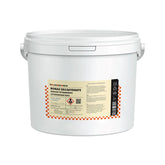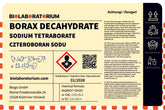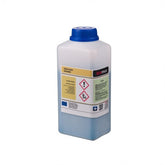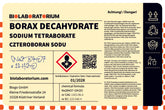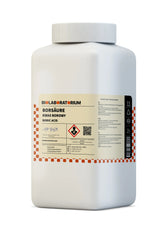Sodium bismuthate – a rare bismuth oxychloride in inorganic analysis
In inorganic analysis, there are numerous interesting compounds that play an important role due to their special properties. One of these substances is sodium bismuthate, also known as sodium peroxobismuthate or NaBiO₃. This rare bismuth oxychloride is a powerful inorganic oxidizing agent that finds application in various analytical procedures.
The discovery and properties of sodium bismuthate
Sodium bismuthate was first described in 1878 by the German chemist Wilhelm Muthmann. He discovered this compound during his investigations of bismuth oxides and their reactions. Sodium bismuthate is a crystalline, yellow-orange powder that is moderately soluble in water. The compound is relatively stable but decomposes at higher temperatures with the release of oxygen.
The chemical formula of sodium bismuthate is NaBiO₃ and represents the +5 oxidation state of bismuth. In this form, the bismuth atom is in a tetrahedral coordination, surrounded by four oxygen atoms. This structural motif is characteristic of bismuth(V) compounds and gives them their special properties.
Applications of sodium bismuthate in analytical chemistry
Sodium bismuthate finds various applications in inorganic analysis, particularly as an oxidizing agent in wet analyses. Due to its strong oxidizing power, it can be used for determining redox systems. Here, one utilizes the fact that sodium bismuthate releases bismuth(III) ions and oxygen in the presence of acids:
NaBiO₃ + 4 H⁺ → Bi³⁺ + NaO⁺ + 2 H₂O + 0.5 O₂
This reaction can be used, for example, for the titration of iron(II) ions by measuring the amount of consumed sodium bismuthate. Sodium bismuthate also plays an important role in manganometry, as it oxidizes manganese(II) ions to manganese(VII) ions, i.e., permanganate, in acidic solution.
Furthermore, sodium bismuthate can be used in wet analysis for the identification and determination of bismuth compounds. Through reactions with sodium bismuthate, characteristic color changes or precipitation reactions can be observed, which allow conclusions about the presence of bismuth.
Production and Handling of Sodium Bismuthate
The production of sodium bismuthate is typically carried out by reacting bismuth(III) oxide with sodium hydroxide and hydrogen peroxide. In this process, sodium metabismuthate is initially formed, which is then converted into sodium bismuthate through drying:
Bi₂O₃ + 2 NaOH + H₂O₂ → 2 NaBiO₃ + 2 H₂O
Due to its oxidizing power and sensitivity to moisture and heat, sodium bismuthate must be stored under protective gas and at low temperatures. Handling therefore requires special precautions in the laboratory.
Analytical Methods with Sodium Bismuthate
In addition to the already mentioned applications in titration and manganometry, sodium bismuthate is also used in other analytical procedures. For example, it can be used for the colorimetric determination of traces of bismuth. This utilizes the fact that sodium bismuthate forms colored complexes with organic compounds like pyrogallol or dithiol in acidic solution.
Furthermore, sodium bismuthate plays a role in the analysis of oxobismuthanes, a class of bismuth-oxygen compounds. These can be identified and characterized through reaction with sodium bismuthate, as it leads to characteristic color changes.
Overall, sodium bismuthate is a valuable reagent in inorganic analytics that finds application in various methods due to its special properties. However, its use requires special precautions in the laboratory due to the oxidizing power and sensitivity of the compound.
Conclusion
Sodium bismuthate, also known as sodium peroxobismuthate, is a fascinating compound in inorganic analytics. As a powerful oxidizing agent, it finds diverse applications, for example in titration, manganometry, and for the identification of bismuth compounds. However, due to its reactivity and sensitivity, great care must be taken during handling.
Overall, sodium bismuthate offers an interesting research field in specialized analytics and shows how diverse the world of inorganic chemistry can be. Whether in laboratory practice or in teaching - this rare bismuth oxychloride certainly still has some potential to offer.

